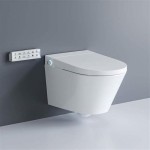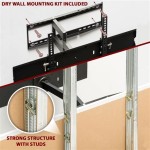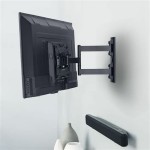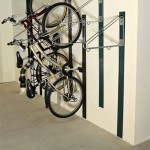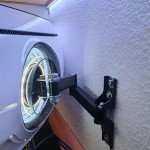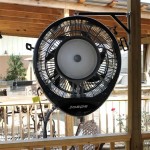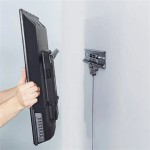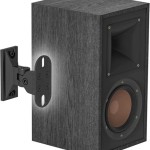The Advantages and Considerations of Mounting a TV on a Bedroom Wall
Mounting a television on a bedroom wall has become a popular home improvement project, offering a sleek and modern aesthetic while potentially optimizing space. This article explores the various benefits, practical considerations, and technical aspects involved in successfully mounting a TV on a bedroom wall.
Space Optimization and Aesthetic Enhancement
One of the primary motivations for wall-mounting a television is to reclaim floor space. In smaller bedrooms, the footprint of a traditional TV stand can significantly impact the room's overall usability. By elevating the television and securing it to the wall, the space previously occupied by the stand becomes available, creating a more open and less cluttered environment. This is particularly beneficial in maximizing movement and creating a sense of spaciousness in constrained areas.
Beyond the practical advantage of space saving, wall-mounting contributes to a cleaner, more contemporary aesthetic. Hiding cables within the wall or using cable management solutions further enhances this streamlined appearance. The visual impact of a wall-mounted TV can be significant, transforming a dated or disorganized bedroom into a more visually appealing and modern living space.
Furthermore, the ability to adjust the viewing angle of a wall-mounted TV adds to the enhanced viewing experience. Tilting and swiveling mounts allow users to optimize the screen position based on their preferred viewing location, minimizing glare and ensuring optimal picture quality regardless of where they are in the room. This adaptability is especially valuable in bedrooms where viewing may occur from different areas, such as the bed or a desk.
Finally, from a safety perspective, mounting a TV reduces the risk of it being accidentally knocked over, particularly important in households with children or pets. Securely fastened to the wall, the television becomes a more stable and secure fixture, minimizing the potential for injury and damage.
Essential Considerations Before Installation
Before commencing the TV mounting project, several crucial factors must be carefully evaluated to ensure a successful and safe installation. Neglecting these considerations can result in structural damage, electrical hazards, or a suboptimal viewing experience.
First and foremost, determining the wall type is crucial. Walls are typically constructed using drywall, plaster, or solid materials like concrete or brick. Drywall, the most common type, requires careful attention to stud location. Studs are vertical wooden or metal beams that provide structural support. The TV mount must be securely anchored to these studs to bear the weight of the television. Using a stud finder is essential to accurately locate the studs behind the drywall. Attempting to mount a TV solely on drywall without proper stud attachment can lead to the TV falling and causing significant damage.
For plaster walls, the process is similar but may require additional precautions due to the brittle nature of plaster. Pre-drilling pilot holes is generally recommended to prevent cracking. Concrete and brick walls offer inherently strong mounting surfaces. However, they necessitate the use of specialized drill bits and anchors designed for masonry applications. Incorrect anchors can fail to provide adequate support, resulting in an unstable installation.
Another critical consideration is the weight of the television. TV mounts are rated for specific weight limits. Exceeding this limit can compromise the mount's integrity and lead to failure. Consult the television's specifications to determine its weight and select a mount that comfortably exceeds this value. It is always prudent to choose a mount with a higher weight capacity for added safety margin.
Additionally, confirm the available space on the wall is adequate for the desired TV size and mount. Measure the wall and the TV's dimensions to ensure that the installation will not encroach on other fixtures, windows, or doorways. Consider the viewing distance from the bed or other seating areas to determine the optimal TV size for comfortable viewing. A TV that is too large for the room can be overwhelming, while one that is too small may strain the eyes.
Finally, consider the placement of electrical outlets and cable connections. Ideally, the outlets should be conveniently located near the mounting location to minimize visible cables. If existing outlets are not suitably positioned, it may be necessary to hire a qualified electrician to install new outlets or relocate existing ones. This is particularly important if intending to conceal cables within the wall, as electrical work should always be performed by a licensed professional.
The Installation Process: A Step-by-Step Guide
The TV mounting process, while seemingly straightforward, requires precision and attention to detail. Improper execution can result in an unstable and unsafe installation. This section provides a detailed, step-by-step guide to safely and effectively mounting a television on a bedroom wall.
Before commencing the installation, gather all necessary tools and materials. These typically include a stud finder, level, drill, drill bits (appropriate for the wall type), screwdriver, measuring tape, pencil, TV mount (with all necessary hardware), and cable management solutions. Ensure that the TV is compatible with the chosen mount based on its VESA (Video Electronics Standards Association) mounting pattern. VESA patterns are standardized hole configurations on the back of TVs used for attaching mounts. Refer to the TV's specifications or user manual to determine its VESA pattern.
The first step is to locate the wall studs using the stud finder. Mark the location of the studs clearly with a pencil. Position the TV mount bracket against the wall, aligning it with the marked stud locations. Use a level to ensure that the bracket is perfectly horizontal. Mark the locations for the mounting screws or bolts. For drywall installations, pre-drilling pilot holes at the marked locations is highly recommended to facilitate screw insertion and prevent the drywall from cracking. Ensure the pilot holes are slightly smaller than the diameter of the mounting screws.
Next, securely attach the TV mount bracket to the wall using the appropriate screws or bolts. Ensure that the bracket is firmly anchored to the studs and that it does not wobble. Double-check the level once again to confirm that the bracket remains horizontal. On concrete or brick walls, use masonry drill bits and appropriate anchors designed for these materials.
With the wall bracket securely in place, attach the mounting arms to the back of the television, aligning them with the VESA mounting holes. Use the screws provided with the TV mount, ensuring that they are the correct length to avoid damaging the TV's internal components. Tighten the screws securely, but avoid over-tightening, which could strip the threads.
Once the mounting arms are attached to the TV and the bracket is secured to the wall, carefully lift the television and attach it to the wall bracket. Most mounts feature a locking mechanism or screws that secure the TV to the bracket. Follow the manufacturer's instructions to properly engage the locking mechanism or tighten the securing screws. Double-check that the TV is firmly attached to the bracket and that it cannot be easily dislodged.
Finally, address cable management. Run the power cord, HDMI cables, and any other necessary cables down the wall. Conceal the cables using cable management solutions such as cable sleeves, raceways, or in-wall cable management kits. In-wall cable management requires careful planning and may necessitate the installation of a low-voltage electrical box behind the TV to safely house the cables. It is generally recommended to consult with a qualified electrician before attempting in-wall cable management to ensure compliance with local building codes and safety regulations. Organize the cables neatly behind the TV to minimize clutter and maintain a clean aesthetic.
After completing the installation, thoroughly test the TV to ensure that it is functioning properly. Verify that the picture quality is satisfactory and that all connected devices are working correctly. Gently push on the TV to ensure that it is securely mounted and that there is no excessive movement. If any issues are detected, re-examine the installation and make any necessary adjustments.

5 Things To Consider Before You Mount A Tv In The Bedroom Mountingdream

4 Things To Consider When You Put The Tv In Bedroom

Tv Wall Mounts For Bedroom

Tvs In The Bedroom Our Tv Mounting Guide

5 Things To Consider Before You Mount A Tv In The Bedroom Mountingdream

Affordable Sony Tv Wall Mounting In Bedroom Newport Sydney

Extended Flip Out Tv Hidden Wall Mount For Bedrooms Hvtv

Mounting A Tv In The Bedroom

How High To Mount Tv In Bedroom For 65 Inch Television Installation Toronto

Hidden Motorized Tv Wall Mount For Master Bedroom By Hvtv

